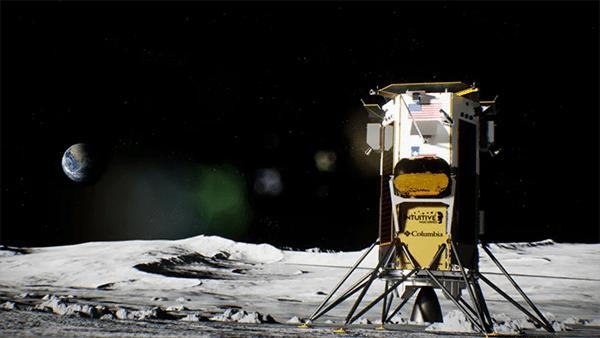When you look at the Moon tonight, take a moment to appreciate that American ingenuity has returned to our nearest celestial neighbor.
On Feb. 22, an American spacecraft landed on the Moon for the first time in 51 years. The last lunar landing was Apollo 17 in December 1972.
This new mission was groundbreaking and historic for several reasons. It was a private sector venture by a commercial company operating with government support. It was the first American landing at the Moon’s south pole. And it was a breakthrough in the search for water, which may be key to developing the Moon and venturing onward to Mars.
Importantly, Intuitive Machines’ successful IM-1 mission to the Moon is a direct result of Trump administration initiatives to enable American leadership in space.
I worked with Vice President Mike Pence when he chaired the National Space Council. Along with Staff Director Scott Pace, we thought through how to breakout from the bureaucratic, risk averse, and timid system into which NASA had evolved.
The NASA system had decayed tragically from the brilliant, entrepreneurial pioneering, and risk-taking system President John F Kennedy had inspired with his challenge to go to the Moon by the end of the 1960s.
As President Kennedy said at Rice University on Sept. 12, 1962:
“We choose to go to the moon in this decade and do the other things, not because they are easy, but because they are hard, because that goal will serve to organize and measure the best of our energies and skills, because that challenge is one that we are willing to accept, one we are unwilling to postpone, and one which we intend to win, and the others, too… It is for these reasons that I regard the decision last year to shift our efforts in space from low to high gear as among the most important decisions that will be made during my incumbency in the office of the Presidency.”
A half century later, NASA was battered from changing presidential and congressional goals. The bureaucracy aged in place. It had grown focused on small, useful projects. Trying to do big things was beyond its capabilities unless the political environment changed.
The Trump administration refocused attention on the Moon as a goal which would help secure American leadership in space. It created a U.S. Space Force. It initiated a strong public private partnership. It recognized the potential of Elon Musk’s Space X (and its cost collapsing reusable rockets) as a potential launching point for a bold new space program. The Trump administration created programs to help support American businesses in leading a new chapter in space exploration.
NASA Administrator Jim Bridenstine and the administration developed the Artemis Program to return humans to the Moon and set the stage for the development of a human path to Mars.
One part of this ambitious project was NASA’s Commercial Lunar Payload Services initiative (CLPS). Intuitive Machines, led By Dr. Kam Ghaffarian, won a contract to create its lunar lander to carry science, technology, and cargo. Now, Intuitive Machines is the first commercial company to land a spacecraft on the Moon. Its Odysseus lunar lander touched down softly and is healthy with all payloads operating and accomplishing its tasks.
As former NASA Deputy Administrator Jim Morhard wrote me in an email:
“Donald Trump recognized that we cannot afford to continue to develop, design, build, and operate our space systems. He refocused on what would allow us to continue our American leadership in space, for whoever leads in space, leads the world. He created and continued programs to help support American businesses to lead a new chapter in space exploration. Our attention moved to creating space lanes of commerce that would promote the burgeoning space economy in Low Earth Orbit as well as re-establishing a presence on the Moon so we could both test out what will be needed to take humans to deep space as well as create a platform to build spacecraft using robotics, 3D printing, and AI on the Moon where the cost of heavy lift is far less expensive.”
People had talked about using private companies to get cargo to the Moon for years. The Trump administration created and funded the reality of buying commercial delivery services to do it.
The importance of this commercial approach to space was captured by former House Science and Technology Committee Chairman Bob Walker, who wrote to me:
“The IM-1 success is a harbinger of a redefinition of US space leadership because it combines government resources with private investment. That combination hugely expands the funds available for space activities including economic, security and scientific. We should recognize space, beginning with the Moon, is this century’s answer to the western expansion of the nation in the 1800s. The historic impact will be even greater.”
With entrepreneurs such as Musk and Ghaffarian – and companies such as Space X and Intuitive Machines – moving at the speed of entrepreneurship, we may be on the edge of a remarkable age of exploration and development which will change all our lives forever.
When you look at the Moon tonight, take a moment to appreciate that American ingenuity has returned to our nearest celestial neighbor.
Get Newt’s Latest Book:


Newt’s Latest Articles:
- The Time Has Come for President Biden To Remove the Handcuffs on Ukraine’s Military
- Republicans Have to Win Day One of the Election
- Biden the Paper Tiger
- How AI is Changing the World
- The Judge’s Democratic Operative Daughter












